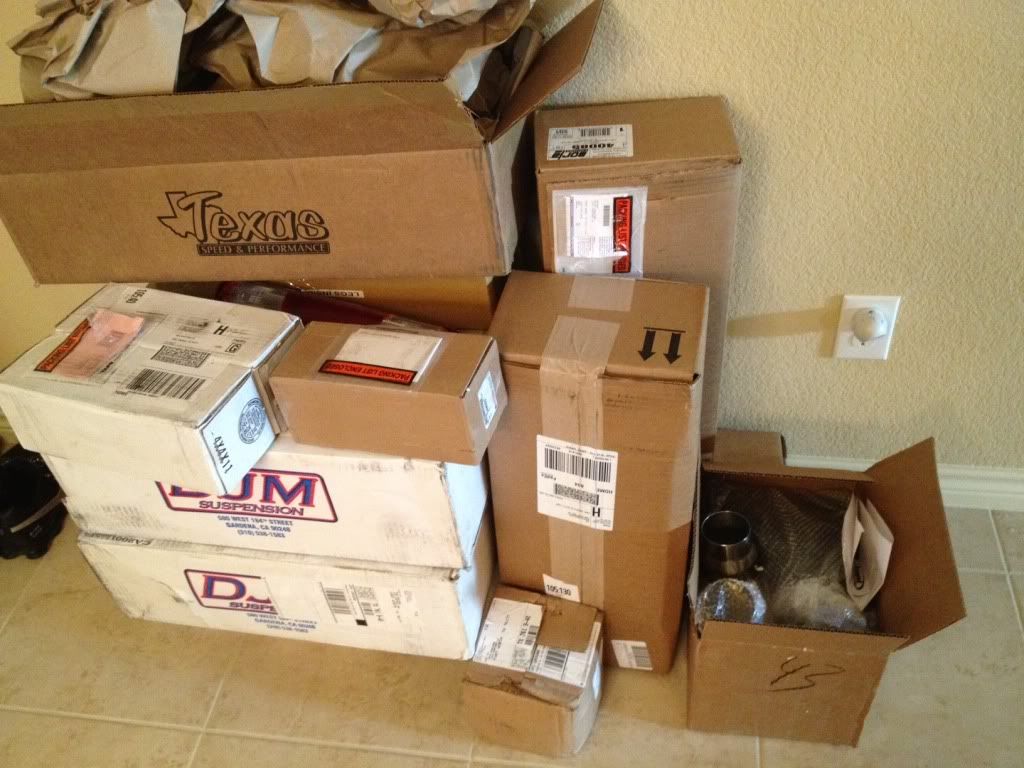-
Posts
858 -
Joined
-
Last visited
-
Days Won
3
Content Type
Profiles
Forums
Events
Gallery
Store
Posts posted by TYLERTXSS
-
-
Ill premise this with im in no way a cam expert, but I figured it would help me a little better at the track being Ill have a transbrake and what not and plenty of low end so I fugred I would get more gains at higher RPM's than a 112. But on the other hand I realllly wanted a nasty idle so I wanted the 112 or 110. Tell me if Im way off base, maybe I can swap it out with TSP. lol
-
Me and the wife are going to Italy for 2 weeks in late July!

-
Haha I had to forward this one to the wife!
-
Outsider looking in (I dont have an LS1 screen name) seems like the guy was full of shit and got what he deserved and thats to be called to the carpet. The nitro guy just seems like he's trying to protect his business. I could understand if the nitrous guy screwed his order up and the playboy guy was just a disgruntled buyer that coudnt be pleased but it seems like he bought the kit second hand, to which he posted that himself on pt.net. Idk who cares...SSS.COM IS THE SHIT!

-
-
What a bitch made loser
Sent from a rotary payphone using Tapatalk
-
Yep!
Sent from a rotary payphone using Tapatalk
-
Bump for a legit seller, I just bought some injectors from him.
-
Ill take a small black with a dark grey(gunmetal) SS stitching.
-
Email me pics of the fuel rails
Sent from a rotary payphone using Tapatalk
-
Sounds real good. Is the 22" case supposed to be quiter than the 18"?
Yeah the larger the volume in a muffler case, the quieter the muffler.
-
Im trying to decide if I should order the high volume oil pump of scroggy dickens and a catchcans.com catch can. Im still looking into it but its getting down to crunch time to order.
-
From the research I did on here and pt.net its a good overall cam with a little bit more on the performance side than dd, I dont daily drive the truck so thats why I went with it. Im sure someone with a lot more knowledge on them could tell you mroe than me. Cfresh has basically the same set up as me I noticed.
-
Haha yeah not quite. Im ready to get home and started.
Cam specs:

Sent from a rotary payphone using Tapatalk
-
2.5" inlet camaro style exhaust tips. They are 304 stainless flat black powdercoated. The welds are ugly as shit but the wifey said they seem solid.



Sent from a rotary payphone using Tapatalk
-
The before pics:


Sent from a rotary payphone using Tapatalk
-

General Motors’ team of global brake experts is making history by changing the chemical makeup of the components using a process previously used to treat powertrain parts. Not only does the new metal-treatment process save consumers hundreds of dollars, but it saves General Motors Company (NYSE: GM) on warranty costs.
For example, since its introduction on brake rotors in 2008, FNC has helped reduce warranty claims on brakes by 70 percent. This is significant because in a recent consumer study conducted by GM, four in 10 vehicle owners listed corrosion among the top three bothersome things about their cars. The same study showed brake components at the top of the list of customer concerns.
The official name for the metal-treatment technology is Ferritic Nitro-Carburizing, or FNC, and it has most often been used to treat powertrain parts. The engineers developed an exclusive corrosion protection process that super heats the rotors at 560 degrees Celsius for a day in an oven the size of a tour bus. Inside the nitrogen-rich atmosphere, nitrogen atoms bond to the surface of the steel rotor, hardening and strengthening the rotor.
Fact is, more than 80 percent of U.S. vehicles are exposed to one or more environmental corrosion creators, such as acid rain, intense sunlight, snow and ice, and road salt. So, GM brake rotor technical expert Jim Webster and his team were confident that slowing the oxidation brought on by the environment was a problem material science could solve.<BR itxtNodeId="129">Incorporating a unique surface treatment equivalent to one-tenth the width of a human hair, FNC creates sufficient friction and allows for effective braking performance while providing corrosion protection.
With FNC, GM vehicles are free of brake pedal or steering wheel shudder caused by an uneven buildup of rust on the rotor that occurs over time. Another feature is, FNC rotors create less brake dust than non-FNC rotors; and for vehicles with large open-architecture wheels that show off wheel hardware, FNC helps keep rotors looking clean and rust-free longer.
FNC rotor technology is featured on the Buick Lacrosse and Regal as well as on the Chevrolet Malibu, Impala and Volt in North America. It will be featured on more than 80 percent of GM’s U.S. vehicles by model year 2016.
Bottom Line Affected for Customers
By avoiding rotor repair and replacement, FNC treatment could save customers more than $400 over 10 years.
“Rotors aren’t a cheap thing to replace,” said Webster. “So doubling the average life expectancy of the brake rotors from 40,000 to 80,000 miles is something we think our customers will appreciate.”
Beyond the innovation note, GM is the only company that has found a way to effectively treat brake rotors with the FNC process and has several patents pending on the technology, contributing to the company’s No.1 position among automotive and transportation innovators as tracked by the U.S. Patent Board.
-
I have my borlas sitting in the hallway right now, I got 2 XR-1 3'' SI/SO im going to run the true duals off the headers, should sound nasty
-
Im liking #1.
-
the cutouts on my stock engine, its gonna be nasty when they are open after I finish the install.
-
More parts shots and a clone my wife saw at Cabela's in FTW.
-
-
Thats my home defense system Roxy, I have 2 males and one weighs about 75lbs but they are scared of their own shadow... she on the other hand wants your throat if you come into her crib.
-








79 Z-28
in Video & Photography
Posted
man thats...ok ill say it...PRETTY!